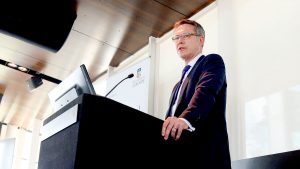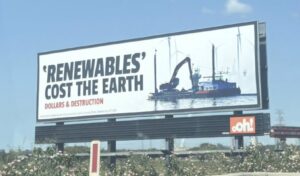The once high flying electric vehicle charger manufacturer Tritium DCFC has succumbed to a litany of financial problems, with the appointment of voluntary administrators and receivers to its three Australian subsidiaries Tritium Pty Ltd, Tritium Holdings and Tritium Nominee.
According to a brief statement to the US Securities and Excgange Commission – parent company Tritium DCFC is listed on the US NASDAQ – the boards of the parent and subsidiary companies determined that they were insolvent or likely to be insolvent. There has been no announcement to the NASDAQ.
Under Australian law administrators Peter James Gothard, James Douglas Dampney and William Martin Colwell of KPMG have taken control of the company’s Australian operations. Receivers from McGrathNicol will seek a buyer on behalf of the lenders that appointed them.
Tritium was an extraordinary Australian success story and was once ranked as among the world’s best-selling fast charger makers.
However, its fall has been equally precipitous since expanding and listing in the US – a symptom being the collapse in the company’s share price from over US$200 in September, 2023 to US$3.64 yesterday.
How the company came to this will be written about for many years – how a manufacturer had a 75 per cent market share in electric vehicle chargers in Australia, and ranked number one in the US and number three in Europe faltered during a time of rising EV sales is bound to be a case study in every management course.
It seems likely a too rapid expansion, a lack of understanding of of the realities of manufacturing in the US, an inability to make a profit even when producing chargers at scale and reliability issues combined to the demise of the business.
Tritium was a darling of Australian manufacturing for many years, producing EV chargers at its Brisbane factory which has employed as many as 600 people.
However, the company then moved to list on the US Nasdaq exchange and build a massive new factory in Lebanon, Tennessee which was expected to house up to six charger production lines.
Brisbane’s Tritium move to produce in the US was motivated by that larger market and the subsidies luring manufacturing to the US through the US Buy America Act and Federal Highway Administration (“FHWA”) requirements for domestic sourcing.
Tritium DCFC grew at breakneck speed, reporting in May, 2023 record production and a claim that with US production rising, it now had the largest charger production plans of any company outside China.
The company set a new production record then, with preliminary results from January 1, 2023 to April 30, 2023 of approximately 3,200 units, and revenue of $57 million in the year to date.
However Tritium was making losses on the chargers it produced so getting bigger only increased the problem, and there were also complaints of unreliability issues with their chargers.
Unable to turn things round, in October Tritium sought a $90 million bailout from the Queensland government and talked of federal support as well – none was forthcoming.
By November 2023 Tritium faced up to its problems and announced the closure of its original Brisbane factory by Christmas with the loss of 400 jobs and a plan to achieve profitability in 2024.
In November CEO Jane Hunter said: “While we continue to build on our recently reported financial results, which include achieving record revenue and gross margin, strategic restructuring of our business is necessary to drive both profitability and shareholder value.”
However consolidation in the US and a much vaunted change programme failed to put the company on a path to becoming EBITDA positive.
Most recently it has been fighting NASDAQ to retain its listing which has failed to meet minimum price requirements.
Now it is in financial collapse.
Perhaps the moral is you can be too ambitious and too quickly, and that government support and a booming market are not everything in commercial success.
A lesson indeed for those companies wishing to access the National Reconstruction Fund and a Future Made in Australia developments in Canberra.
Story first published in AuManufacturing. Reproduced with permission of the author.







